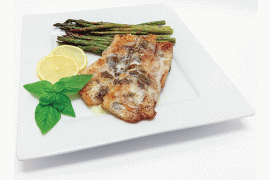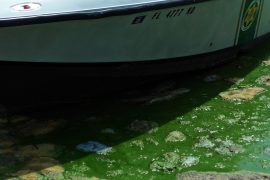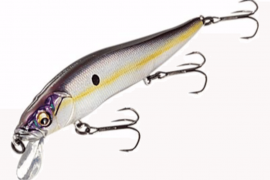“Get ready, we’re almost there,” I said as I glanced over my shoulder at the small waves astern and reconfirmed with my chart plotter. Sean Callinan and I were drifting a conveyor belt of sorts, one of many in our home waters of eastern Long Island Sound, where an approaching rip — more a series of telltale riffles — over a reef 63 feet below forecast the bite just before we reached it.
I’m on!” replied Callinan as he set the hook. “Feels like it has some weight to it.” About 30 seconds later, which seems like forever when your buddy has already hooked up, I felt a hard tug on my line. I prayed it wasn’t a rock and immediately set up on my own fish.
By the time we drifted into the rougher water, we had battled two big sea bass to the boat. Callinan’s hit the teaser above the lure, while mine grabbed my shiny jig below. “It’s going to be ceviche tonight,” said Callinan as he unhooked and admired his prize knothead. “And you say I have climate change to thank for that?”
Most of us agree climate change is a bad thing, and it’s affecting many fish species in the western North Atlantic. According to NOAA Fisheries, as the waters warm, populations shift northward. For bottom anglers in southern New England, however, this has meant a significant increase in black sea bass, which were once most prevalent off North Carolina, but they’re now regulars as far north as the Gulf of Maine.
“The hot bottomfishing in our area is now focused on sea bass,” says Capt. Q. Kresser, manager at River’s End Tackle in Old Saybrook, Connecticut. “We’re seeing numbers and sizes of these fish like never before. Beginners and pros alike target them with great success, which comes at a perfect time when other bottomfish species are declining. Sea bass are aggressive, fight well and are excellent eating.”
Almost any deep structure from eastern Long Island Sound through Rhode Island and southern Massachusetts is a potential sea bass jackpot. Sharpies closely guard their hot spots because a fleet of boats can quickly pick a patch of ground clean of big fish.
The good news is there are hundreds of productive spots in southern New England, many seldom fished. Your best bet is to study a chart and your depth finder to locate your own sea bass hangouts. Don’t just join the fleet.
I became sold on diamond jigs several years ago while targeting bluefish over reefs. I caught plenty of blues, but I also started landing large sea bass on heavy jigs sporting 8/0 hooks, especially when the bluefish were scattered or off the feed.
Humpback sea bass are not only aggressive, but they also have bucket mouths and willingly inhale large, fleeing prey or, in this case, diamond jigs.
Experts use the lightest jig possible given the wind, current and depth, which allows for the most action and feel. On offshore spots south of Block Island, for example, pros carry jigs up to 12 ounces. But in the waters of eastern Long Island Sound, a 6- to 8-ounce diamond is perfect because it weighs just enough to reach bottom in deep water and resembles prey species such as squid and herring.
“When fishing shallower spots inside Buzzards Bay,” says Capt. Ned Kittredge of Westport, Massachusetts, “3- to 4-ounce jigs are my preference.”
Almost any diamond-jig hook works for big sea…





